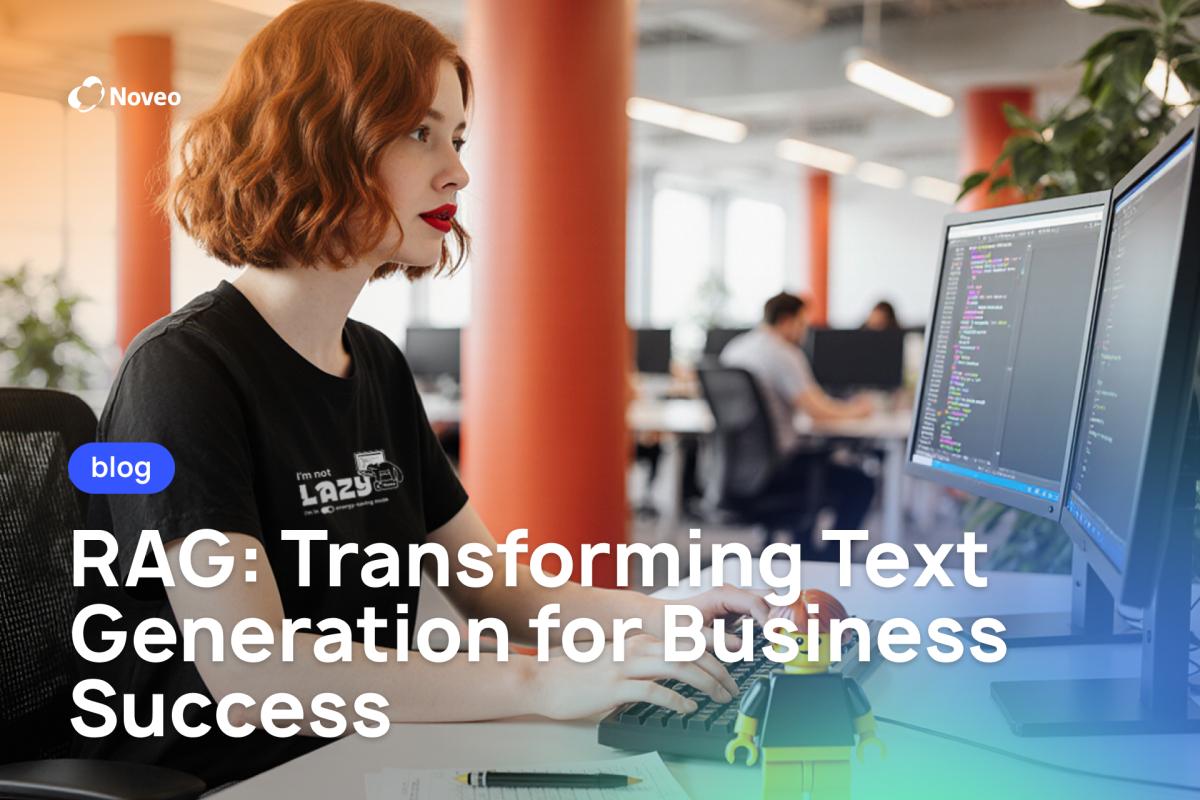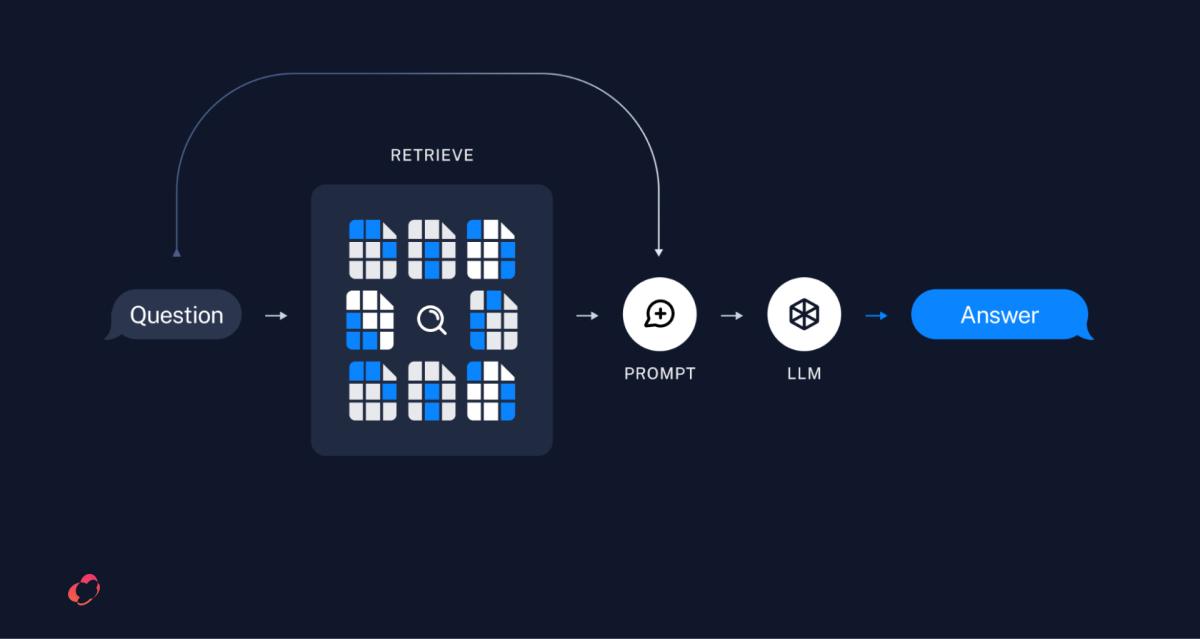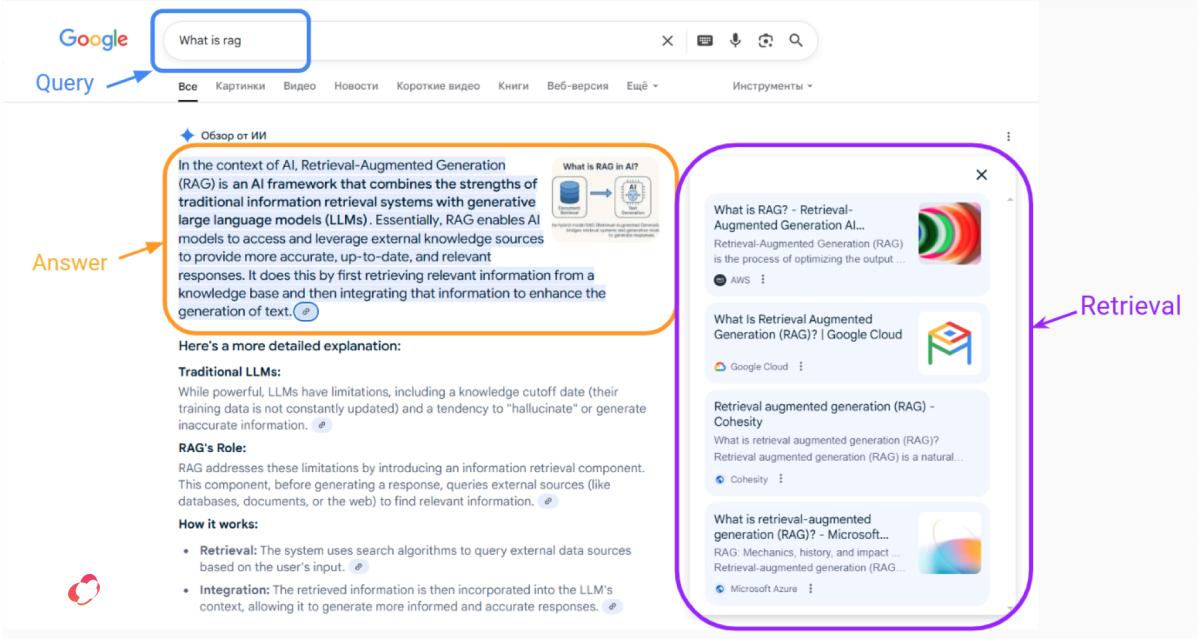
In a world where information is a cornerstone of success, technologies that quickly retrieve and process data are game-changers. Imagine an assistant that writes human-like text while pulling real-time insights from your company’s database or the latest news. That’s RAG (Retrieval-Augmented Generation)—a revolutionary approach to text generation. Noveo Data Scientist Aleksander explains in the article, what RAG is, where it’s used, how it benefits businesses, and what Advanced RAG brings to the table, with clear examples to show its real-world impact.
What is RAG?

RAG, short for Retrieval-Augmented Generation, combines the capabilities of language models (such as GPT, Claude, or Deepseek) with real-time data retrieval. Traditional models are limited by their training data, which is often outdated, such as only including information up to 2023. Ask about recent events or company-specific details, and they can’t deliver. RAG solves this with a two-step process:
- Retrieval: The model analyzes the query and searches connected sources, like internal documents, news, or Wikipedia.
- Generation: It utilizes the retrieved data to craft a precise and relevant response.

This approach is already enhancing tools like Google Search, where models fetch current data before answering. Think of RAG as of a brilliant librarian who finds the right book and summarizes it perfectly.
Where is RAG Used?
RAG’s versatility makes it valuable across industries:
- Chatbots and Customer Support: Provides answers based on a company’s latest data.
- Information Retrieval: Delivers meaningful responses—not just keyword matches.
- Content Creation: Generates articles, reports, or posts using fresh sources.
- Education: Assists students by drawing from textbooks or research papers.
- Business Analytics: Turns raw data into clear, actionable insights.
RAG adapts to any task involving text and data, making it a powerful, all-purpose tool.
How Does RAG Benefit Businesses?
For businesses, RAG streamlines operations, cuts costs, and boosts quality. Here’s how:
- Customer Support: A RAG-powered chatbot uses your knowledge base to deliver accurate, trust-building answers.
- Analytics and Decisions: Transforms internal data into reports for informed decision-making.
- Marketing: Creates targeted content based on customer feedback or trends.
- Research: Speeds up data discovery for developers, from patents to internal records.
- Employee Training: Helps new hires by providing precise answers from company documentation.
What is Advanced RAG?
Advanced RAG takes the technology further with:
- Enhanced Models: Utilizes cutting-edge language models for deeper context understanding.
- Semantic Search: Finds data based on meaning, not just keywords, for greater accuracy.
- Response Validation: Checks response relevance using built-in metrics.
- Continuous Learning: Improves by adapting to new data and feedback.
Advanced RAG is faster, smarter, and better suited for complex challenges—though significantly more expensive to implement.
Real-World Examples
To demonstrate RAG’s advantage over traditional models, we’ll compare responses to queries that demand current or internal data. These “hypothetical scenarios” highlight how RAG taps into external and company sources.
Example 1: U.S. Election Results
- Query 🔎: “Who won the 2024 U.S. presidential election?”
- Without RAG ❌: “My data ends in 2023, so I can’t share 2024 election results.”
- With RAG ✅: “Based on news and Wikipedia, Donald Trump won the November 2024 election, becoming the 47th U.S. president.”
- Why Better? RAG pulls from live external sources, unlike static models.
Example 2: Company Sales Data
- Query 🔎: “How did our new smartphone perform in June 2025?”
- Without RAG ❌: “I don’t have your company’s sales data—my training stops at 2023.”
- With RAG ✅: “Your records show the ‘TechTrend X’ sold 25,000 units in June 2025, generating $10M, with strong demand in Europe.”
- Why Better? RAG accesses internal systems for precise answers.
Example 3: Marketing Post
- Query 🔎: “Write a post about our new laptop using July 2025 reviews.”
- Without RAG ❌: “Our laptop is powerful and stylish—buy now!”
- With RAG ✅: “Discover the ‘UltraPro’ laptop! July 2025 reviews rave: ‘Battery lasts all day!’ (Anna, Kazan) and ‘Perfect for work and gaming’ (Igor, Novosibirsk).”
- Why Better? RAG creates engaging, evidence-based content.
Example 4: Vacation Policy
- Query 🔎: “What’s our 2025 vacation policy?”
- Without RAG ❌: “Vacations are typically 28 days, but I don’t know your company’s rules.”
- With RAG ✅: “Your March 2025 policy offers 30 paid vacation days, plus 5 for seniority.”
- Why Better? RAG retrieves up-to-date internal documents.
Example 5: Sales Strategy
- Query 🔎: “How can we boost Q3 2025 sales?”
- Without RAG ❌: “I only have data up to 2023—here’s a 2022 strategy.”
- With RAG ✅: “Your CRM shows an 8% B2B sales rise in Q1-Q2 2025. Target small businesses, where demand grew 12% in July 2025 (‘Market Trends 2025’).”
- Why Better? RAG delivers actionable advice from fresh data.
Why RAG?
RAG overcomes the limits of static models, enabling real-time and internal data access. For businesses where accuracy and speed are important, it is an indispensable tool. Advanced RAG goes even further, offering deeper insights and flexibility.
RAG empowers organizations to harness information effectively—streamlining operations, enhancing support, and generating impactful content. Adopt it, and see how intelligent automation redefines what’s possible.